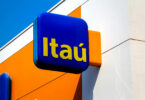This week S&P Global Ratings released a report on the crossover between AI and crypto entitled, “The Question is WHEN, Not IF.” With the launch of ChatGPT almost two years ago, the topic of AI is now far more prominent than blockchain and crypto. But the intersection of the two is not new.
Before delving into the report, it’s worth exploring a couple of examples of the two technologies working together. Artificial intelligence requires machine learning, which in turn needs data. So one application is using crypto to compensate people or devices that generate data.
Since 2019, German manufacturer Bosch has been working with Fetch.ai to use IoT devices and Fetch’s idea of Autonomous Economic Agents (AEA). These are sensor-driven (IoT) devices that are both self-learning and capable of automatically transacting using crypto. One can easily imagine a decentralized network of weather stations receiving compensation for data. These types of applications are referred to as decentralized physical infrastructure networks (DePINs).
Fetch recently did a deal with GameSwift Launcher which enables people to use their computer’s unused graphics card capacity for AI applications such as text-to-speech or music creation. In other words, they run large language models (LLMs) locally, creating a decentralized network that addresses the capacity shortage. Of course, compensated using crypto.
S&P’s report on the intersection of AI, crypto
Back to the S&P Global Ratings’ report, which highlights the potential for AI, but also the risks it brings. These include data traceability, cyber threats, and data center energy consumption.
The report envisions three potential future scenarios. At one extreme, there are modest advancements in both AI and crypto. At the other end, the vision includes a decentralized internet powered by crypto and AI. In this scenario, blockchain’s immutability and traceability help with transparency and auditing. It will be possible to figure why AI came up with that crazy idea. Blockchain can also help to distinguish between humans and bots.
Another scenario is the rapid expansion of AI, as is happening now, with centralization risks. In other words, the governance of these large vendors is relatively opaque. There are concerns about bias, privacy and censorship.
The report then takes these three scenarios and it applies them to different use cases including cybersecurity, financial markets and supply chain.
“Synergies between the technologies should support their growth, mitigate centralization risks, and give rise to impactful applications ranging from supply chain management to smart cities,” said Andrew O’Neill, Digital Assets Managing Director, S&P Global Ratings. “The rate at which those applications will emerge, and the pace of their adoption, remains uncertain. Yet we believe that the question is not if adoption will happen, but when it will occur.”






